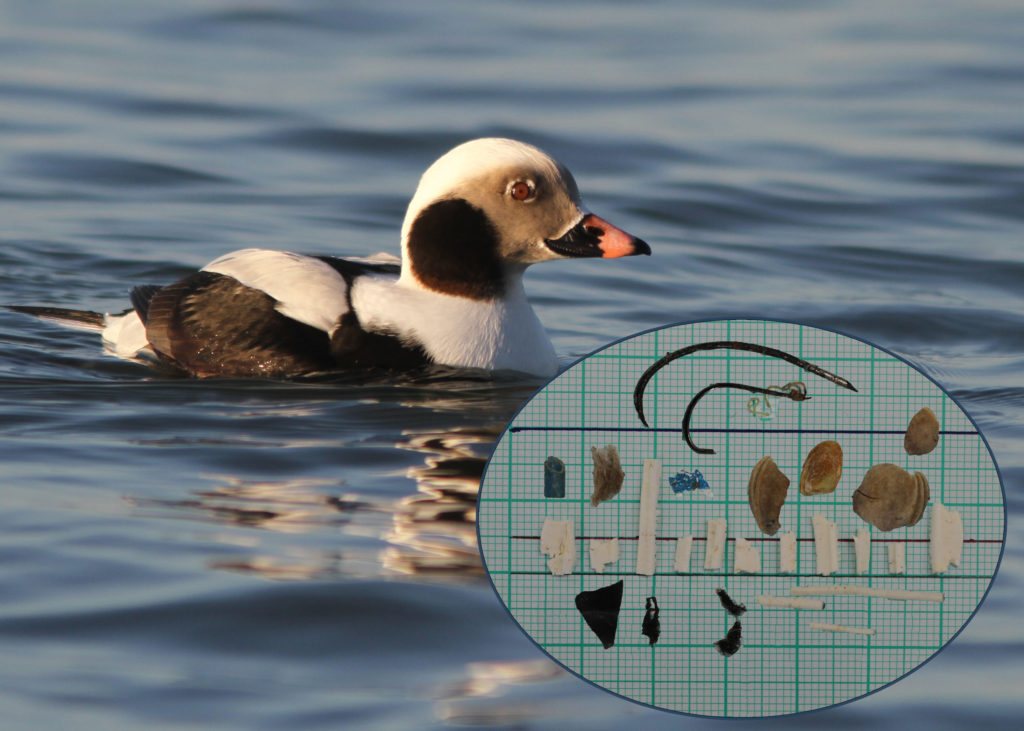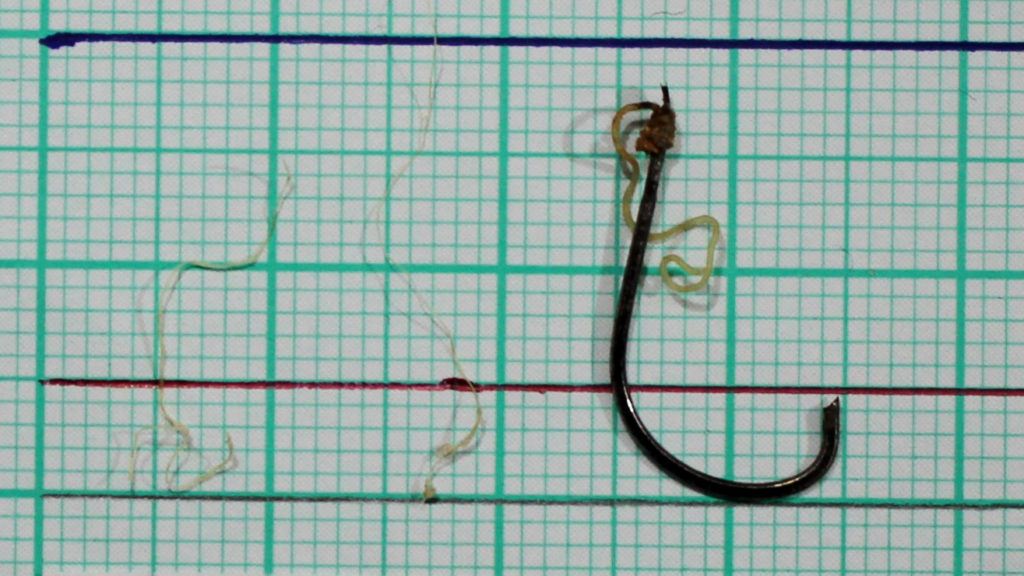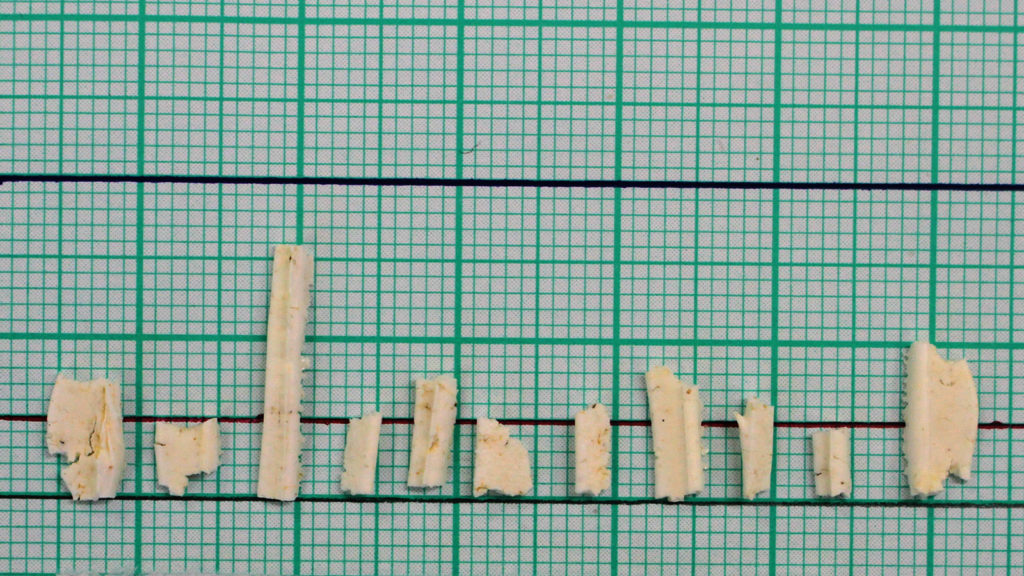Scientists Find Plastic and other Garbage in the Stomachs of Baltic Seabirds
Researchers of the Marine Research Institute of Klaipėda University studying the nutrition of birds report the discovery of plastic and other garbage in the stomachs of seabirds wintering in the Baltic Sea. This is the first scientific data-based case in the Baltic Sea region and the first one in the world for the species of the long-tailed duck (Clangula hyemalis).
The seabirds nesting in the northern regions congregate for the winter in the Baltic Sea. Over the past 20 years, the abundance of bird species in it has declined for a number of reasons, and several species of diving ducks have even halved. Wintering seabirds in the Baltic are either fish-eating or feed on bottom invertebrates such as molluscs, sea cockroaches, or shrimp. Not only do they spend all winter at sea, feeding merely on prey caught there, but they generally avoid humans and do not use food given by man or left by chance, as, e.g. gulls, which are often met in coastal towns or beaches, do.
KU researchers and students analyzing the nutrition of seabirds have examined the stomachs of more than 500 birds over the past five years and found that, in total, about 2 percent of all seabirds had plastic or other trash lodged in their stomachs. The number of birds that had ingested garbage varied from species to species – thus, as much as 5% of long-tailed ducks, normally feeding on bottom invertebrates and fish, had swallowed some of it. Garbage got to the stomachs of fish-eating red-throated divers (Gavia stellata) (4.5%) and common guillemots (Uria aalgae) (3%) with a similar frequency. Only mollusc-eating velvet scotters (Melanitta fusca), common scotters (Melanitta nigra), and fish-eating great crested grebes (Podiceps cristatus) had no garbage in their stomachs.
“We were greatly surprised that birds such as endangered long-tailed ducks, which fed on molluscs and other invertebrates and could separate feeding objects with their sensitive beaks, still ate so much trash,” says Julius Morkūnas, one of the authors of the research.
Scientists identified plastic objects most commonly found in the stomachs of seabirds as packaging waste. Other common ‘finds’ included the remnants of soft porous white plastic used for lids, remnants of elastic rubber and insulating wire, and sections of fishing nets. Another find was a cigarette filter, which also belonged to plastic trash. Several ducks had swallowed fishing hooks and other metal items.
Researchers noted that young birds tended to ingest more garbage than adults. More trash was also found in the stomachs of species eating more diverse food. Although the amount of plastic found in the stomachs of birds was small, the research proved that plastic and other garbage could become a new threat to the Baltic Sea environment.
For more information on the research findings, see:
Morkūnas, J., Biveinytė, V., Balčiūnas, A. and Morkūnė, R., 2021. The broader isotopic niche of Long-tailed Duck Clangula hyemalis implies a higher risk of ingesting plastic and non-plastic debris than for other diving seabirds. Marine Pollution Bulletin, 173, p.113065.




